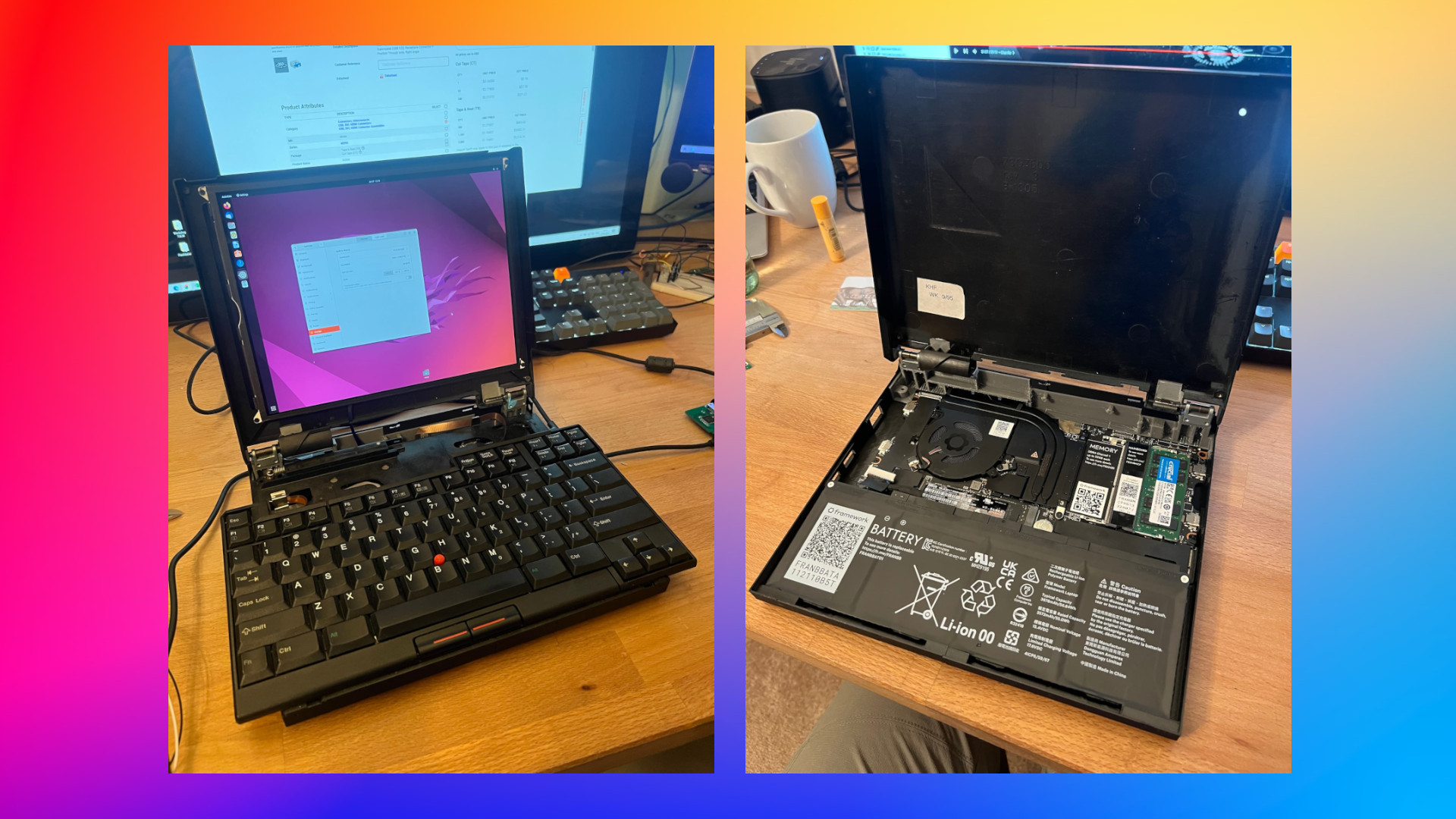
IBM Thinkpad 701C Receives 21st Century 'Brain Transplant'
Intrepid Thinkpad fan Karl Buchka replaced the internals of the 701C with the much more powerful Framework mainboard. The best official specs for this laptop rated it at a 486 DX4, not something that can cope with the demands of the 21st century. Unlike today’s best laptops, the best laptops of the mid-1990s featured chunky cases, DSTN screens, and a slew of proprietary ports. But IBM was always eager to please its road warrior customers, and from this desire came the 701C. The Thinkpad 701C features a novel “butterfly” keyboard that slides out to reveal a larger typing area.
Buchka’s project has been ongoing for the past six months. The project begins with a broken IBM Thinkpad 701C, bought on a whim. Buchka decided to use the broken Thinkpad as a base on which to build something glorious and decided on the Framework hardware as a base. Currently, the project is fully working but in a “mock-up” state for testing. But as we can see in the pictures, Buchka has successfully booted Ubuntu.
The original spec of the 701C is laughable today. But in its heyday, it was a productivity monster. The butterfly keyboard gave writers a comfortable typing experience while folding down into a smaller package. So how does it square up to the brain transplant?
| Row 0 – Cell 0 | IBM Thinkpad 701C | IBM Thinkpad 701C Brain Transplant |
| CPU | Intel 486 DX2 50 to DX4 75 | Intel I7-1165G7 |
| RAM | 4 – 40MB | Crucial 16GB DDR4 |
| Storage | 720MB IDE | WD Black SN850 500GB NVMe SSD |
| Screen | VGA 640×480 TFT active matrix | 10 inch iPad display 2160 x 1620 |
Buchka’s project is much more than just throwing a Framework motherboard into the 701C’s case. Buchka managed to squeeze the Framework mainboard into the back half of the case. In the front is the battery to power the laptop. The lower part of the case is a 3D printed draft, which could easily be printed on some of the best FDM 3D printers. For high quality and strength, the final case will be printed using MJF (Multi Jet Fusion). The hinge bracket is to be printed using DMLS (Direct Metal Laser Sintering), which fuses layers of metallic powder using high-powered lasers.
It turns out that Apple’s iPad 7 display is an almost perfect fit for the 701C’s TFT screen. The iPad screen is adapted to use the eDP connector on the mainboard. The large 2160 x 1620 display is vast compared to the 701C’s 640 x 480. Buchka notes that there is no space for Framework’s expansion cards. USB-C dongles that sit flush with the Framework laptop and provide extra ports. Instead, they have chosen to expose two USB-C ports on the right side of the case. On the left, a custom USB-C port replicator exposes two USB-A ports. Buchka is still working on the CAD models for this part of the build.
The star of the show has to be the butterfly keyboard, and it continues to shine thanks to a Teensy 3.6 microcontroller that provides both keyboard and trackpoint as USB devices thanks to a customized QMK build. In the final build, the keyboard and trackpoint electronics will become a custom PCB, right now it is a self-confessed mess of wires.
This project is wonderful. We love the old Thinkpad aesthetic but crave the power of the latest CPUs. This project marries the two very well. More details can be found on Buchka’s Framework community profile page.


